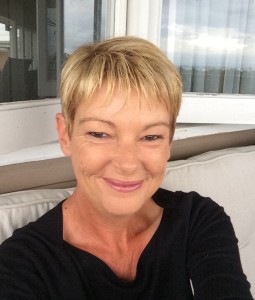Fear is something that has held me back in the past, not being prepared to take risks that moved me outside my comfort zone. That has all changed since I made the decision to become a life coach. Each day I am faced with new challenges to overcome, new ways of thinking, and the person I now have to become. Each day I am faced with the decision to push through the fear to get my dream off the ground or to turn back. Each day I choose to move forward, sometimes taking leaps of faith or some days smaller more manageable steps.
Guess what! It just gets easier, who knew that dealing with fear was just a process, and a change of perception.
I recently read the book “Feel the fear and do it anyway” by Susan Jefferes. In it she explains the process that I have experienced. I hope the following information helps you to move forward and take that first step into the unknown.
The five truths about fear.
- The fear will never go away as long as you continue to grow as an individual.
- The only way to get rid of the fear of doing something is to go out and do it.
- The only way to feel better about yourself is to go out and do it.
- Not only are you going to experience fear whenever you’re on unfamiliar territory but so is everyone else.
- Pushing through fear is less frightening than living with the underlying fear that comes from a feeling of helplessness.
The biggest fear of all – the one that really keeps you stuck is
I can’t handle it!
At the bottom of every one of your fears is simply the fear that you can’t handle whatever life may bring you.
The truth is:
If you knew you could handle anything that came your way, what would you possibly have to fear?
Nothing
All you have to do to diminish your fear is to develop more trust in your ability to handle whatever comes your way!
Some fear is instinctual and healthy and keeps us alert to trouble. The rest – the part that holds us back from personal growth is inappropriate and destructive, and perhaps can be blamed on our conditioning.
What matters is that you begin now to develop your trust in yourself, until you reach the point where you can say:
Whatever happens to me, given any situation, I can handle it!
We can’t escape fear. We can only transform it into a companion that accompanies us in all our exciting adventures; it is not an anchor holding us transfixed in one spot.
If everybody feels fear when approaching something totally new in life, yet so many are out there “doing it” despite the fear, then we must conclude that fear is not the problem. The real issue has nothing to do with the fear itself, but rather, how we hold the fear. For some, the fear is totally irrelevant. For others, it creates a state of paralysis. The former holds their fear from a position of power (choice, excitement and action), and the latter hold it from a position of pain (helplessness, depression and paralysis). The secret to handling fear is to move yourself from a position of pain to a position of power. The fact that you have the fear then becomes irrelevant.
To help you on your pain to power path, it’s important that you begin to develop a pain to power vocabulary. The way you use words has a tremendous impact on the quality of your life. Certain words are destructive; others are empowering.
Pain to Power Vocabulary
Pain > > > > > > Power
I can’t _____________________________ I won’t
I should ___________________________ I could
It’s not my fault ______________________ I’m totally responsible
It’s a problem________________________ It’s an opportunity
I’m never satisfied ____________________ I want to learn and grow
Life’s a struggle ______________________ Life’s an adventure
I hope _____________________________ I know
What will I do? _______________________ I know I can handle it
It’s terrible __________________________ It’s a learning experience
Begin eliminating the words terrible, can’t, problem, struggle, and should from your vocabulary. When you give your subconscious these messages your subconscious believes you. Not only does your sense of yourself change with a more powerful vocabulary, so does your presence in the world. People who display an inner strength are treated differently from those who come across as weak. The more powerfully you speak, the more you will be a force in the world around you.
You can also bring more power into your life by expanding your comfort zone. Try each day to do something that pushes you outside your zone. Take a risk a day – one small bold stroke that will make you feel great once you’ve done it. Even if it doesn’t work out the way you wanted it to, at least you tried. You didn’t sit back powerless. As your power builds, so does your confidence, so that stretching your comfort zone becomes easier and easier. The magnitude of the risks you take also expands. As long as you are taking risks – no matter how small you are moving yourself to a more powerful position.
When you feel yourself hesitating take the leap instead of backing away. Feel the fear and do it anyway.
 About the Author: Cath McEwen
About the Author: Cath McEwen
Cath McEwen is a passionate, genuine, caring, and certified life coach who is inspired to support individuals who are in pursuit of personal growth and their own passions. She started Daring to Dream Life Coaching as a part of her own dream, following a journey of self discovery and personal growth.
Cath believes that embracing change while being true to yourself, your values, and your unique talent is within the power of all of us. If you are looking for a new perspective or approach, and support to take that first step into the unknown she would love the privilege of working with you.


 About the Author: Cath McEwen
About the Author: Cath McEwen
Leave a Reply